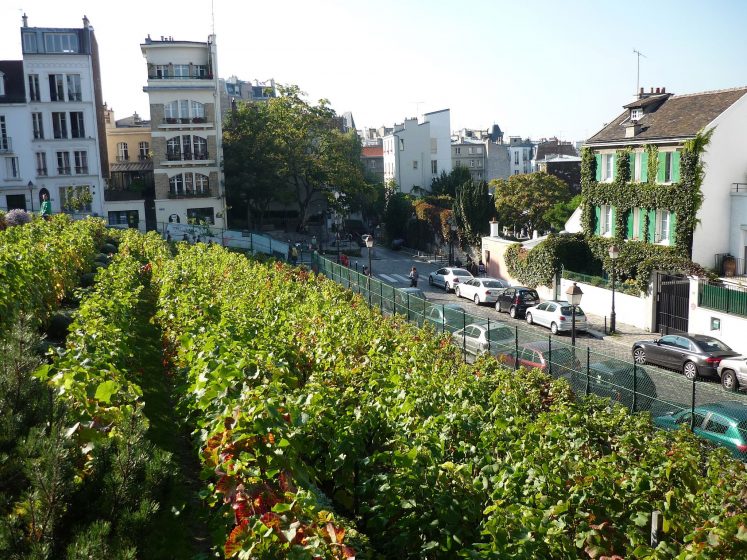City Blooming Fundamentals Explained
City Blooming Fundamentals Explained
Blog Article
The Greatest Guide To City Blooming
Table of ContentsLittle Known Facts About City Blooming.Excitement About City BloomingNot known Details About City Blooming 3 Easy Facts About City Blooming ShownThe Only Guide for City Blooming
Intrigued in growing food for sale in the City of Chicago? Below is a checklist of frequently asked inquiries pertaining to the policies and regulations that farmers need to consider when intending an urban agriculture task.
The zoning change does not modify any kind of other codes taking care of composting, building permits, purchasing or renting City had building, organization licenses or ecological contamination. There are existing codes that regulate these problems and they continue to be completely result and might apply to your project. Area gardens are generally possessed or managed by public entities, civic companies or community-based companies and maintained by volunteers.
Urban farms expand food that is meant to be sold, either on a not-for-profit or for-profit basis. Due to their business purpose, city ranches require a company license.
A Biased View of City Blooming
Composting is permitted yet only for plant material that is generated and used on website. The quantity of garden compost material can not surpass 25 cubic backyards at any given time according to the requirements in 7-28-715 of the City's Municipal Code. Yes. Since the soil at most brand-new yard websites needs modifying, compost, soil, timber chips, or various other materials can be obtained to construct or boost the expanding area - container and raised bed gardening etc..

If a structure permit is needed then the hoophouse will be considered an accessory structure. You can figure out more about the structure permit demands by speaking to the Department of Buildings. The 25,000-square-foot size restriction is planned to stop a single neighborhood garden from controling a given block or detracting from the block's existing household or commercial personality.
The restriction does not apply to yards found in Public Open Space (POS) areas. Can there be even more than one neighborhood yard that is 25,000 square feet on a solitary block? Fencing is not called for, nonetheless, yards that have large auto parking locations may be needed to set up secure fencing or other landscaping attributes.
Fascination About City Blooming
B1 & B2 districts require that all industrial use activities be conducted inside. Is fence needed for urban ranches? Fences may be needed, along with landscaping and testing, for particular car parking areas and outdoor work or storage space areas depending on place and the particular activity taking place.
Yes. Urban ranches require structure permits and zoning approvals before building. Various other types of city testimonial might be called for depending upon certain frameworks, tasks, dimension, landscape design, licensing, public heath and stormwater administration concerns. A lot of these demands are identified in the job style or allowing procedure, nevertheless, the candidate may be accountable to independently determine particular licenses or permits that might be needed.
Yes. The type of certificate is figured out by what is occurring at the website. The Department of Company Affairs and Consumer Protection can aid figure out the specific sort of organization permit that's required. Yes. Off street parking is needed for most industrial tasks in Chicago. The needed variety of vehicle parking spaces is based upon the number of staff members dealing with site and not the square footage of the expanding space.
City Blooming for Beginners

Yes. An urban farm can offer garden compost product generated on site, however, the operation should adhere to the policies in 7-28-715 of the Chicago Municipal Code. Yes. Aquaponic systems are permitted indoors on metropolitan ranches in many zoning areas. Nevertheless, a zoning review and building authorization is called for in order to mount structures or systems and an organization license is needed as defined over.
Up to five hives or swarms of honey may be kept as an accessory use. Beekeepers have to register with the Illinois Department of Farming. For more details regarding the proposed zoning amendment you may contact the Department of Real Estate and Economic Development, Bureau of Preparation and Zoning at 312.744.8563.
Farming in cities and city locations A city ranch in Chicago. Urban agriculture refers to different methods of growing. https://www.behance.net/danielnold, processing, and distributing food in urban areas. The term also uses to the area activities of animal husbandry, aquaculture, beekeeping, and horticulture in a city context. Urban farming is differentiated from peri-urban agriculture, which takes location in rural areas at the side of suburbs.
5 Simple Techniques For City Blooming
It can entail a motion of organic growers, "foodies" and "locavores", that seek to create socials media based on a shared principles of nature and neighborhood holism. These networks can develop by means of formal institutional their explanation assistance, ending up being integrated right into local town as a "change town" motion for lasting urban advancement.
Some of the first evidence of urban agriculture comes from Mesopotamia.
Report this page